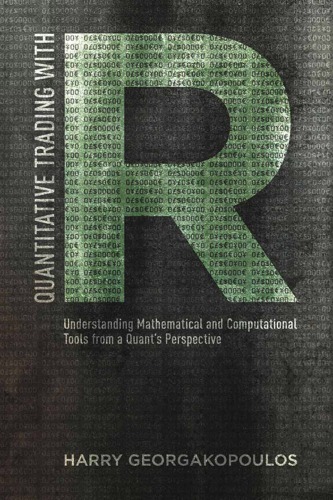دانلود کتاب Quantitative trading with r: understanding mathematical and computational tools from a ... quant's perspective - Original PDF
Author:
Georgakopoulos, H
0 (0)
توضیحات کتاب :
The primary tools that quants and traders rely on to perform their daily activi- ties include intuition, data, computer hardware, computer software, mathematics, and finance. They utilize these tools in ingenious ways as a means to an end. The end, of course, is the generation of consistent profits in the financial markets. Many traders have done well for themselves by relying on intuition alone. But intuition alone, on average, will not yield superior results. A tool chest of sorts is required in order to maximize the quant/trader’s chances of producing consistent and favor- able outcomes. A programming language is one such tool. In this book, we will learn how to wield the R programming language for the purposes of manipulating data, performing math operations, automating workflows, displaying informative visualizations, creating reproducible results, and doing lots of other cool stuff. The R language R [88] is an open-source scripting language that has become very popular among statisticians, data science practitioners, and academics over the years. It is a func- tional programming language by nature, but it also supports the object oriented and imperative programming paradigms. 1 In some sense, R is both a program- ming language as well as a development framework. The framework has support for some advanced graphing capabilities and provides access to multiple state-of-the- art statistical packages. The language itself supports conditional statements, loops, functions, classes, and most of the other constructs with which VBA and C++ users are familiar. The plethora of contributed packages by third parties, a solid user-base, and a strong open-source community are some other key strengths of R. The R system can be divided into two conceptual parts:
سرچ در وردکت | سرچ در گودریدز | سرچ در اب بوکز | سرچ در آمازون | سرچ در گوگل بوک
1,108 بازدید 0 خرید










